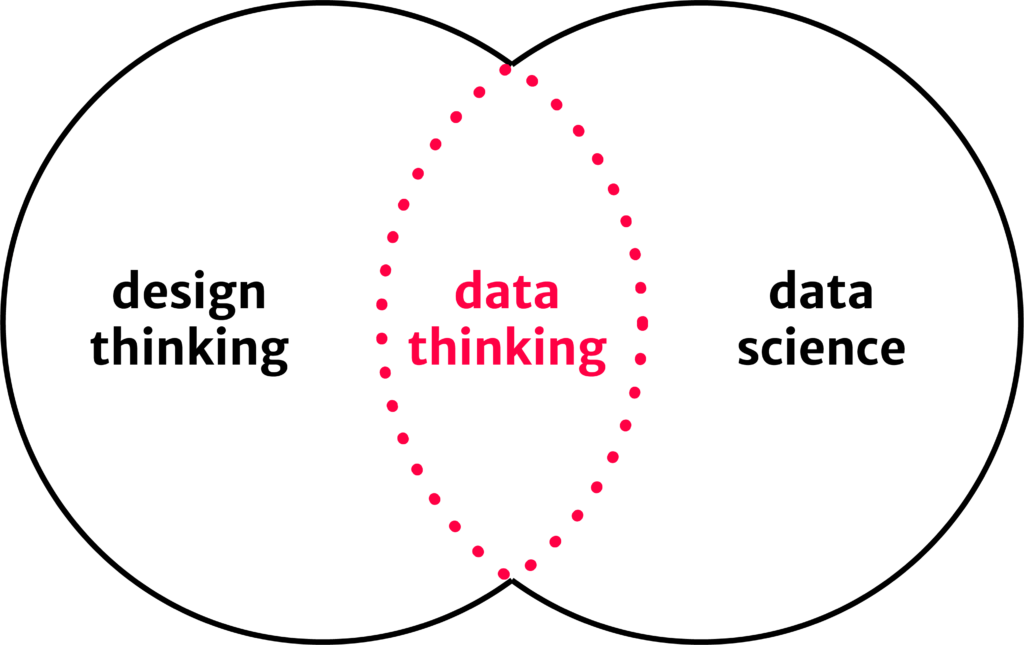Designers are now solving problems at the intersection of two disciplines : data and design. 20 years ago, I began my working life as a graphic designer performing in global advertising and design agencies. And then my understanding of what design was changed.
As the influence of good design grew so did my view of what it could achieve, I began a master’s degree in strategic design. I then started working in science-based fields of research and teaching in higher education. This research and evidence-based design background evolved into growing design cultures within organisations and producing digital products. This path has taken me to Echos where I am now the Design Director.
Parallel to my personal journey with design, the larger design community has been working to create meaning from one of our growing resources, data. This has created an opportunity that my past training has prepared me for, the intersection of data science and design thinking.
The increased capacity to gather data in the digital economy can be used to create better products and services. It is now possible to use the deep insights that data provides about customers and the problems to design solutions with a quantitative basis.
Design As Sense Making
Simply defined, design is an approach to make sense of things. The act of sense making and “giving meaning” is often done at the individual and unconscious level. However, to use design strategically it must be driven by a population or customer segment in a conscious way. There is a theory that design is a “liberal art”. This means that it can be absorbed and performed by anyone at some level. In this sense, anyone can learn design thinking principles and take part in sense making within a project.
Design thinking is a mindset that can be learned by anyone. And now it is important for organisations to start thinking about data in the same way. Just as design thinking assists with sensemaking, data thinking needs to be approached with a similar mindset.
At Echos we believe that everyone can perform as a designer, a belief that I also strongly share and one of the main reasons I decided to join the team. As we work to develop a network of designers across the globe so too are we embracing the importance of data literacy through the lens of data thinking.
This concept is critical to thinking about how design and data can work together to solve sticky problems. Data should be explored not just by data scientists, they should be explored using a diverse range of people within various disciplines. Using design thinking methodologies provides a new way of seeing and tackling problems that can be enhanced by gathering deeper insights that may not be reached otherwise.
What Is ‘Data Thinking’
Peter Drucker famously said,” If you can’t measure it, you can’t improve it.” This saying has been embraced by businesses who actively apply strategic thinking to their growth. Design thinking is also positively affected by this mindset. All design-based decisions should be not only strategic, and outcomes focused, they should be guided by measurable information such as data. Using data-driven design allows us to make agile decisions based on early findings. It also can create the space for new knowledge to emerge throughout the process. The key is to shift between the design process and the data to confirm or debunk a team’s thinking when developing a solution.
Nigel Cross, Emeritus Professor of Design Studies at The Open University UK, argues it is the role of the designer to find the balance and the overlap between the meaning of the data and the space for creative problem solving. This overlap creates a new layer of sense making to guide the development of the solution.
Data + Design = Deeper Insights
The benefits of having research-based training from science, creates an understanding of how the qualitative and the quantitative work together to create deep insights into the needs of the customer. I often use the following definition: we use qualitative methods to discover the context of the problem and what is causing it; and quantitative methods for creating understanding at a deeper level about the problem we are observing. To simplify, the quantitative is ‘how’ the problem is created and the qualitative is the ‘why’ the problem is affecting customers or users.
Often organisations seek to generalise their design solutions. However, the greatest contribution of design thinking is to discover the “why’s” and not the “how’s”. So, while it is important to use data to discover where or how a problem is happening it is the deeper empathic processes of design thinking methodologies that are the greatest allies in innovation projects.
Data Literacy And Design
Data literacy is an integral part of creating organisations who can use their data tactically. To build this capability in your organisation the first step is to identify a team of leaders who are passionate about working with data. From there, management must work in alignment with these leaders and use data to base their decision making, at the strategic, tactical or operational level on.
If data is to be used in design solutions and other critical business areas, the knowledge gathered from data must be accessible to the whole organisation. The key to making this happen is to foster good communication practices. Management and leadership must clearly share the importance of data-driven actions to break down silos and create precedents for organisational wide sharing.
It is important to understand there is no universal formula or framework for a company to become data-driven. The path to success lies in one of the most important design principles: testing and learning. Design is iteration. As an organisation moves towards data-based solutions and data literacy, it must be open to experimentation, agile thinking and provide opportunities to learn from failure.
Next Steps?
If you are curious about harnessing the power of data for design, now has never been a better time to start. The digital revolution is here. The only question is how to take advantage of this new era. No matter where you are in the process of becoming data and design centric, the perfect time to begin is when you take the first step. The time has come to begin the conversation and explore what is possible.
—
Follow us on social
Instagram – Facebook – LinkedIn – Youtube – Spotify
How Can We Help?
- For training and Innovation Journeys in your company: check out our in-house course offering.
- For upcoming courses in your region: visit our website.
- For upcoming events in your region: look at our event calendar.
- If you have a special project and would like to use Echos’ consultancy services: send us an email.
- Want to speak to a real person? Call us on 1300 502 006



